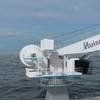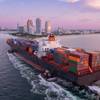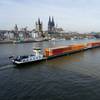OCIMF Updates Safety Guide for Tank Barges and Terminals
Oil Companies International Marine Forum (OCIMF) and the inland navigation sector with the support of the Central Commission for the Navigation of the Rhine (CCNR) have collaborated with other European organizations to produce the second edition of the International Safety Guide for Inland Navigation Tank-barges and Terminals (ISGINTT).
The purpose of ISGINTT is to improve the safe transport of dangerous goods at the interface between inland tank barges and other vessels or shore facilities (terminals). The safety guide is compatible with other international maritime guidance for seagoing vessels (e.g. International Safety Guide for Oil Tankers and Terminals (ISGOTT))—not intended to replace or to amend current legal requirements, but to provide additional recommendations.
The guide, available for free download from the the OCIMF website, makes recommendations for inland tankers and terminal personnel on the safe carriage and handling of such products typically carried in petroleum, chemicals or liquefied gas inland tankers, as well as the terminals handling those inland tankers. This edition encompasses changes in tanker design and operating practices and reflects the latest technology and legislation.
Its implementation is recommended by OCIMF and the following participating industry organizations: European Barge Union (EBU), European Chemical Industry Council (CEFIC), European Federation of Inland Ports (EFIP), European Sea Ports Organization (ESPO), European Skippers Organization (ESO), Federation of European Tank Storage (FETSA), FuelsEurope, Inland Waterways Transport Platform (IWT Platform), International Chamber of Shipping (ICS), and Society of International Gas Tanker and Terminal Operators (SIGTTO), along with the necessary political support of CCNR.
Karen Davis, Managing Director, Oil Companies International Marine Forum (OCIMF), said, “By enhancing risk awareness, ISGINTT seeks to foster an environment where the uncertainties associated with some shipboard operations are reduced not solely by prescription, but also by encouraging barges and terminal crew, as well as their employers, to identify the risks in everything they are doing and to then implement fit-for-purpose risk reduction measures.
“This puts the focus on people and is, therefore, entirely consistent with a strategy related to the human element which has had increased focus in recent years.”
Central to the guide is a number of safety checklists covering ship/shore as well as inland ship/maritime ship (and vice versa) transhipment of cargo and slops. These check-lists have been developed to reflect the individual and joint responsibilities of the tank barge and the terminal and can be easily adopted by all ports and terminals.
Lucia Luijten, Secretary General, Central Commission for the Navigation of the Rhine (CCNR), said, “Safety is critical to the tank barging industry, and it is hoped that this revised guide will become the standard guideline on the safe operation of inland tank-barges and the terminals they serve.
“We are confident that ISGINTT will not only contribute to the further improvement of the industry’s excellent safety record but will also bring us closer to the goal of zero accidents to which we all aspire. We, therefore, recommend it to all interested parties.“













